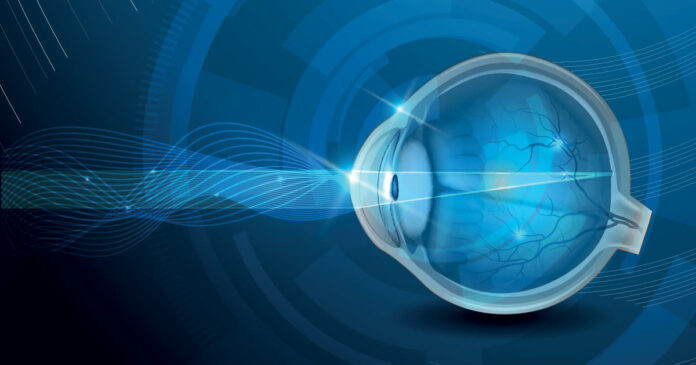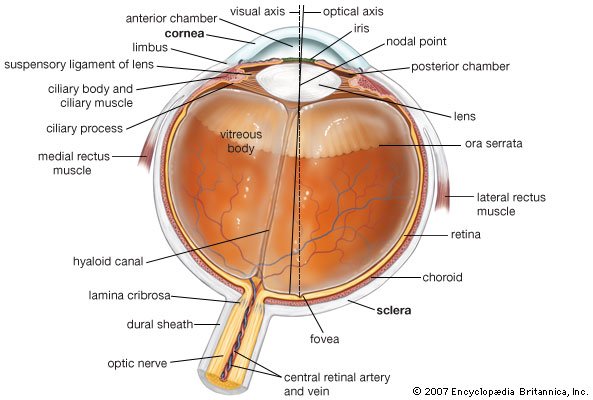
Visual perception is the ability to perceive our surroundings through the light that enters our eyes. The three elements that govern visual perception are:
1. Structure of eyes

- Above figure shows a simplified horizontal cross-section of the human eye.
- The shape of the eye is nearly spherical with a radius of 11 m. (approx). The outermost layer, called the sclera, is a 1 mm thick opaque membrane and merges into the transparent cornea.
- At the rear, the optic nerve penetrates the sclera on the nasal side. The choroid, the membrane that lies directly below the sclera contains a network of blood vessels which provide nutrition to the eye.
- The choroid being heavily pigment reduces the backscatter of light within the optical globe. It’s parts are the ciliary body and the iris diaphragm.
- The iris is a nearly circular aperture that constitutes the pupil. It contracts and expands to control the amount of light entering the eye. The innermost membrane is the retina. The retinal surface contains a mosaic of photoreceptor cells called rods and cones.
- The number of cones in each eye is between 6 and 7 million and that of rods ranges from 75 to 150 million. Cones are primarily located at the centre of the retina, says the fovea, and are sensitive to colour.
- The cones are also responsible for acute vision and cone vision is known as photopic or bright-light vision.
- Rods give an overall appearance of the scene but are not involve in colour vision. They are sensitive to low levels of illumination. So, rod vision is known as scotopic or dim-light vision.
2. Image formation

- The principal difference between the lens of the eye and an ordinary optical lens is that the former is flexible. ii.
- In above fig. the radius of the curvature of the anterior surface of the lens is greater than the radius of its posterior surface.
- The shape of the lens is control by the tension in the fibers of the ciliary body;
a. The focus on distant objects, the controlling muscles cause the lens to be relatively flatten. Similarly, these muscles allow the lens to become thicker in order to focus on objects near the eye.
b. The distance between the focal center of the lens and the retina varies from approximately 14 mm to about 17 mm, as the refractive power of the lens increases from minimum to maximum.
c. When the eye focuses on an object farther away than about 3 m, the lens exhibits its lowest refractive power, and when the eye focuses on a nearby object the lens is most strongly refractive.
3. Brightness adaptation and discrimination
- Brightness is a psycho-visual concept and is describe as the sensation of light intensity.
- The contrast is the difference in perceived brightness.
- Detection of a bright spot depends not only on the brightness, size (in space), and duration (in time) but also on the contrast between the spot and the background.
- The spot can be detected only when the contrast is greater than a threshold, depending on the average brightness of the surrounding. This dependence is known as brightness adaptation.
- The range of intensity levels that can be adapted by the human visual system is enormous; the highest level (glare limit) is approximately 101° times the lowest one (scotopic threshold).
- The experimental evidence shows that the brightness perceived by the human visual system is a logarithmic function of intensity incident on the eye.
Read more about Image compression




